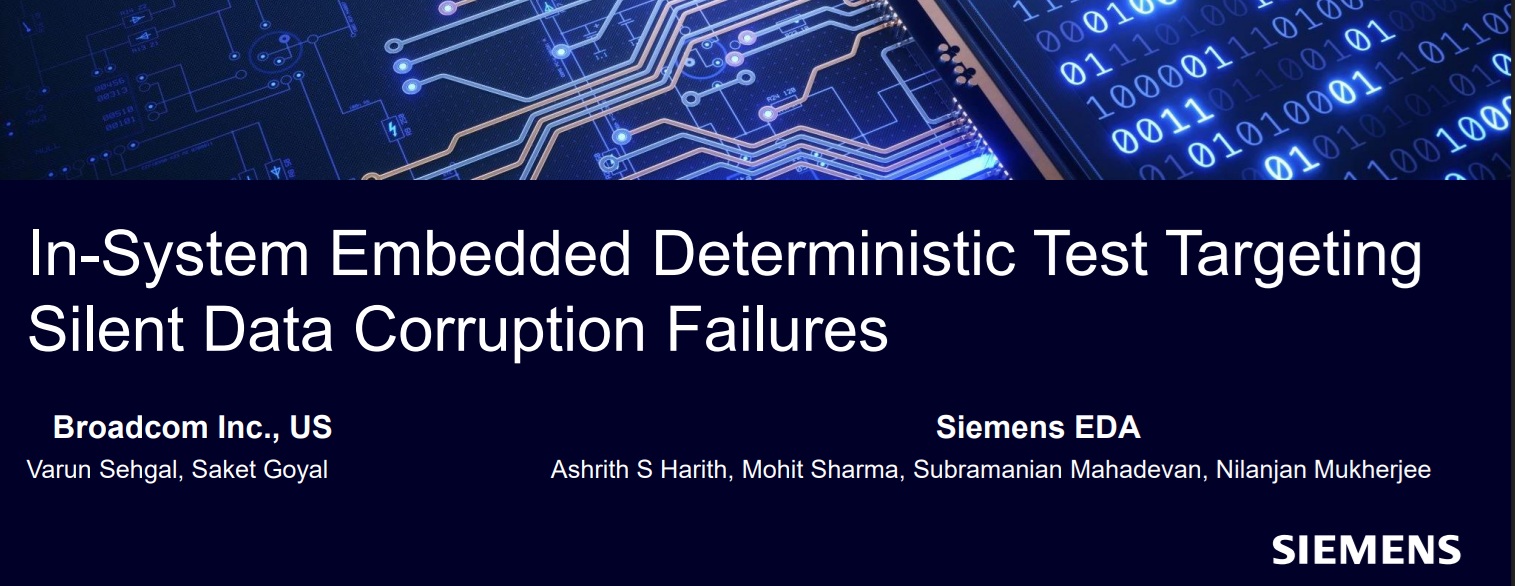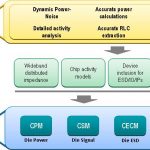We are surprised that everyone is surprised at DRAM, DRAM oversupply/weak demand is systemic so Micron needs to focus on NAND/XPoint.We find it somewhat amusing that many “analysts” were caught off guard about the weakness in Microns results and poor guidance. Why would you think DRAM would be OK???…Have … Read More
 Addressing Silent Data Corruption (SDC) with In-System Embedded Deterministic TestingSilent Data Corruption (SDC) represents a critical challenge…Read More
Addressing Silent Data Corruption (SDC) with In-System Embedded Deterministic TestingSilent Data Corruption (SDC) represents a critical challenge…Read More TSMC's 6th ESG AWARD Receives over 5,800 Proposals, Igniting Sustainability PassionTaiwan Semiconductor Manufacturing Company has once again demonstrated…Read More
TSMC's 6th ESG AWARD Receives over 5,800 Proposals, Igniting Sustainability PassionTaiwan Semiconductor Manufacturing Company has once again demonstrated…Read More Tiling Support in SiFive's AI/ML Software Stack for RISC-V Vector-Matrix ExtensionAt the 2025 RISC-V Summit North America, Min…Read More
Tiling Support in SiFive's AI/ML Software Stack for RISC-V Vector-Matrix ExtensionAt the 2025 RISC-V Summit North America, Min…Read More TSMC based 3D Chips: Socionext Achieves Two Successful Tape-Outs in Just Seven Months!Socionext’s recent run of rapid 3D-IC tape-outs is…Read More
TSMC based 3D Chips: Socionext Achieves Two Successful Tape-Outs in Just Seven Months!Socionext’s recent run of rapid 3D-IC tape-outs is…Read More RISC-V Extensions for AI: Enhancing Performance in Machine LearningIn a presentation at the RISC-V Summit North…Read More
RISC-V Extensions for AI: Enhancing Performance in Machine LearningIn a presentation at the RISC-V Summit North…Read MoreConnections to Internet Drives Semiconductors
We are going to see a big reversal in what connects to the internet in next five years. At the start of this century there were about 488 million internet connections; 85% of those were connected to people for web browsing, e-mails, on-line services etc. and only 15% were used for embedded systems, remote sensing and control, and M2M… Read More
DSP gives Project Tango a power dip
Google’s Project Tango is a prime example of a sophisticated application pushing the boundaries of what is possible within the power envelope of a mobile device. Its objective is to combine 3D motion tracking with depth sensing to understand how a device is moving and gauge its surroundings precisely.… Read More
The "Great Acceleration"
The “Great Acceleration” is upon us. On all fronts technology in everything is advancing at an ever accelerating rate due to improvements in education/training, increased power and functionality of hardware, software, access to information(Google, technical publications, etc.) prototyping techniques (3D… Read More
A Synergistic Chip-Package-System Analysis Methodology
Looking back, 2015 was a significant year for mergers and acquisitions in the EDA industry. The Semiwiki team maintains a chronology of major transactions here.
As I was reviewing this compendium, one of the entries that stands out is the acquisition of Apache Design Solutions by Ansys, Inc. a couple of years ago.
At that time, there… Read More
Leveraging HLS/HLV Flow for ASIC Design Productivity
Imagine how semiconductor design sizes leapt higher with automation in digital design, which started from standard hardware languages like Verilog and VHDL; analog design automation is still catching up. However, it was not without a significant effort put in moving designers from entering schematics to writing RTL, which… Read More
HDCP 2.2, Root of Trust, Industry’s First SHA-3 Security IP from Synopsys
Did you know that by 2020 90% of cars will be connected to Internet? Great, but today, there are already more than 100 car models affected with security flaws (Source: theguardian.com, 2015). That 320 apps are installed on average smartphone device? It would be a complete success, but 43% of Android devices allow installation of… Read More
How Wireless Modem IP is Aiding Roadmap to 5G Chipsets
The semiconductor industry is steadily charting its course toward 5G chipsets with the availability of extremely complex system-on-chip (SoC) designs that support the surge of data traffic over next-generation wireless networks. Take Blu Wireless Technology, for instance, the IP supplier from Britain that is using the Arteris… Read More
Future Shock – IoT benefits beyond traffic and lighting energy optimization
The year is 2029, approximately 35 years after the Internet went mainstream and today the world, its people and things are connected in ways that the Internet’s pioneers could never have imagined. The Internet of Things (IoT) or as Cisco put it, The Internet Of Everything (IoE) is now a reality, enhancing our lives in myriad ways.… Read More
China’s chip plans an economic attack on Taiwan?
An economic “bear hug” cold war invasion? If China can’t get Taiwan by politics or force maybe it can get them by a backdoor economic takeover starting at their most crucial spot – Chips. An ulterior motive for China’s semiconductor aspirations, the $100B silicon Trojan Horse?
Its quite clear … Read More





Quantum Advantage is About the Algorithm, not the Computer